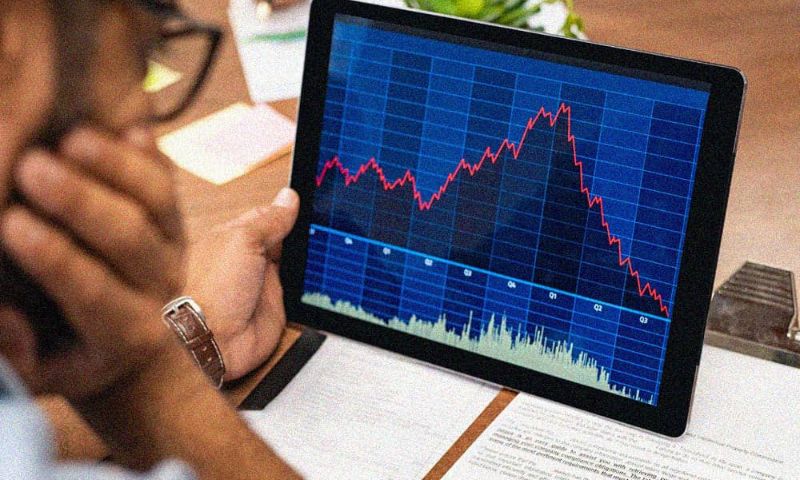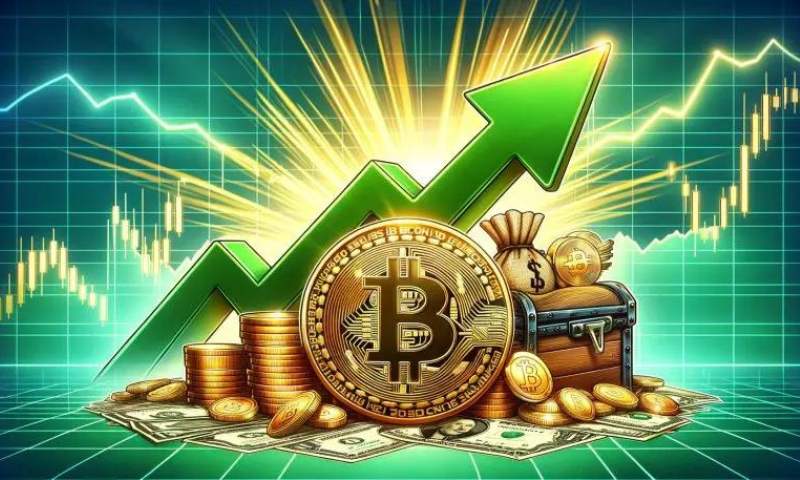Impact of Liquidity on Crypto Exchange: Thriving or Diving?
Have you ever wondered how the impact of liquidity on crypto exchange shapes your trading experience? Liquidity acts like oil in the engine of the crypto market; without enough of it, things can grind to a halt. It’s what lets you buy and sell fast without moving prices too much. Picture a market full of eager traders, all able to make quick deals—that’s a liquid market. But when there’s not enough action, even one big trade can send prices spinning. As someone who dives into these digital currency waters, you need to know how this ebb and flow can be your ally or your foe. Let’s break down why liquidity matters and how it can make or break your trades.
Understanding the Role of Liquidity in Cryptocurrency Markets
The Fundamentals of Market Liquidity and Trading Volume
Liquidity in crypto is like water to fish. It’s vital. A liquid market lets you buy and sell fast. Without it, you risk getting stuck. Imagine selling a token, but no one’s buying. Or buying, but prices soar before you click ‘buy’. That’s poor liquidity for you.
Crypto exchange volume shows how much trading happens. More volume, more fish in the pond. That’s good! It means you can likely move big amounts without much price change. So, what affects this? Many things. Supply and demand, news, even rumors. Traders must watch these, always.
Liquidity Providers: The Unsung Heroes of Crypto Exchanges
Liquidity providers are your best trading pals. They are investors who fill the pools with their tokens. These pools let you trade any time, with tight price ranges. This is crucial. Why? Because quick and fair trades depend on them.
They take the risk, hoping for fees in return. When you trade, part of what you pay goes to them. It’s their reward for making your trades smooth. More providers mean a healthier market. They bring balance. They lessen price shocks from big trades.
Liquidity pools in crypto are like marketplaces. They need sellers and buyers. Providers act like constant sellers and buyers. They ensure there’s always someone on the other side. Without them, markets would freeze. Thanks to them, they thrive.
Slippage is another thing liquidity fights. It’s the gap between the price you want and what you get. In a liquid market, slippage shrinks. That’s good for your wallet.
But beware, a liquidity crisis can happen. If everyone tries to sell but no one wants to buy, you’re in trouble. Prices drop fast. That’s when you hear “the market crashed”.
Crypto is exciting but remember, it’s not just about the price going up. It’s also about being able to move in and out. Quick and at fair prices. Liquidity is the silent force that makes this happen. Or stops it dead. So when you trade, think about the water level. Is it enough for your trading ship to sail smoothly? This is your sign to look under the hood, beyond the price.
Now, let’s talk about how we keep this pond full. Liquidity mining and rewards. These invite more providers. And with more of them, our trades get even smoother. Risk drops.
In all, liquidity shapes your crypto journey. It can make it a breeze or a storm. That’s the power of liquidity in the blockchain sea. More than just a buzzword. It’s the heartbeat of every trade you make, every profit you take.
Navigating Through Liquidity Risks and Benefits in Crypto Trading
Assessing the Impact of Bid-Ask Spreads on Trade Execution
Let’s talk shop about something key in crypto: bid-ask spreads. Picture a sidewalk sale. Here, Lisa wants to sell her bike. The lowest price she’ll take is $50. We call this the ‘ask’ price. Now, Tom wants to buy her bike but only plans to spend $45. We’ve got a ‘bid’ price now. That $5 gap? Yep, it’s the ‘spread’.
In crypto, just like at our sidewalk sale, a smaller spread makes trading faster. When Lisa drops her ask to $47 and Tom ups his bid to the same, we get a deal. Fast and easy! In crypto, a narrow spread means better prices for everyone. You buy or sell quick, close to the market price. But beware! A wide spread can mean you’re paying more or getting less for your crypto.
The Double-Edged Sword of High Liquidity: Pros and Cons for Traders
Let’s dive into this ocean we call liquidity. High liquidity is like a big, busy pool. Lots of people are swimming, splashing, trading. You can jump right in, make your trades and often get a good price. It’s great for traders: you can move big amounts with little waves—no big price changes. That’s the shiny side of the sword.
But every sword has two edges. The other edge can be just as sharp. With so many trades, prices can swing fast. That’s risky. More people might want to sell when you want to buy. Prices fall. Or everyone wants to buy and prices jump. And remember what we said about spreads? In a less busy pool, with fewer swimmers, the spread grows. That can hurt if you’re in a hurry to trade.
High liquidity means more trades come with ease. Still, the market can flip fast. As traders, we must keep our eyes open and be ready to swim with the current, or know when to get out of the water. It’s all about balance. Like walking on a beam, we have to find the sweet spot between too much and too little. Only then do we cross safely.
In the crypto world, we’re all trading on digital sidewalks and swimming in virtual pools. We’ve got to be smart about spreads and stay sharp on liquidity. Get these right, and you can keep your trades humming along. Mess up, and you might slip.
As traders, let’s navigate with care and make sure we’re trading with enough water under our keels, but not so much that we lose control of the ship. Knowing when to sail the seas of high liquidity and when to dock at a quieter port could spell the difference between smooth sailing and choppy waters.
Remember, high liquidity isn’t all treasure and parrots. It’s also storms and sea monsters. But with the right map and a keen eye on the horizon—on spreads, volumes, and market depth—we can chart a course to successful crypto trading.
Decentralized Finance (DeFi) and the Evolution of Liquidity Pools
The Mechanisms and Effects of Liquidity Mining
Liquidity mining sounds complex, but it’s just a way to earn rewards for helping out. It’s like being a part of a community garden. You plant your crypto seeds in a liquidity pool and, in return, you get a share of the fruits—these are extra tokens. The more you contribute, the more you get. This not only makes the pool bigger and better for everyone but also can give you a steady flow of new tokens.
In DeFi, these pools are vital. They let people swap different tokens easily. But they need a lot of tokens to work well. That’s where liquidity providers come in. They put their tokens into these pools. In return, they get fees from the trades that happen there. It’s like if you let people use your blender for smoothies and got paid a bit for each smoothie made.
However, it’s not all smooth sailing. Some risks come with liquidity mining. The price of the rewards you earn can change a lot, and there’s always a chance that the tokens you’ve used could lose value. This risk is known as ‘impermanent loss’. And it’s called that because if you wait long enough, things might even out. But if you need to take your tokens out early, you could end up with less than you started with.
Dealing with Decentralized Finance Liquidity Concerns: Strategies for Investors
In DeFi, there’s no one watching over your shoulder, making sure all is fair. So, you must be smart about it. Let’s say you’re at a huge water park—lots of slides, lots of fun, but also lots of chances to slip if you’re not careful. Here are some tips:
First, do your homework. Know the pool you’re jumping into. How big is it, what’s in it, and how has it been doing? This is your ‘depth of market crypto trading’ check. The deeper the pool—the more money and different tokens in it—the safer your dive.
Next, keep an eye on the ‘liquidity pools in crypto’. The more people join in, the better it gets for everyone. Just like more water makes for a better slide.
Then, factor in ‘slippage in digital currency exchange’. It’s like the friction on the slide. The less there is, the smoother your ride. Slippage means you might get a bit less than you expected when you swap tokens, especially in smaller pools.
Don’t forget about the ‘liquidity crisis in cryptocurrency’. When people get scared and pull out their tokens, pools dry up. Imagine everyone running out of the pool at once—no fun, right?
Keep an eye on the ‘bid-ask spread in blockchain markets’. This tells you how much more you might pay over the lowest selling price. Like paying a bit extra at the snack bar because there’s a long line.
Remember, being a ‘liquidity provider role in crypto’ is about helping the pool thrive. You contribute tokens, help with trades, and in return, you earn fees. It’s like hosting the best part of the water park.
Finally, consider ‘liquidity risk management for crypto’. Just like at the water park, where you look after your stuff and wear sunscreen, in DeFi, you need to protect your assets. Diversify your investments, don’t put all your eggs in one basket, and be ready for anything.
To thrive in the DeFi space, understanding and managing these elements will make your experience more rewarding, just like knowing the tricks on the slides makes your water park adventure a blast!
The Consequences of Liquidity on Market Stability and Crypto Valuation
How Flash Crashes and Stablecoin Liquidity Reshape Markets
When too few orders exist to match trades, prices can drop fast. This is a flash crash. Flash crashes throw prices off balance. They scare traders and can cause huge losses. Stablecoin liquidity helps here. When traders swap cryptos for stablecoins, it smooths out prices. This keeps markets more steady.
Stablecoins act as a safe zone during storms in the crypto sea. They let traders move in and out of other coins with less risk. When lots of stablecoins are ready for trade, it means we can buy or sell without making huge waves in the price. This is good for all of us who want to trade without worry.
Predicting Volatility: The Interplay Between Liquidity and Market Makers
Market makers help make sure enough coins are there to trade. They buy and sell continuously. This makes sure no one waits too long to trade. Good market makers can calm the seas of the crypto world. They add to the depth of market crypto trading. This depth is like a big sponge. It soaks up big trades without letting the price change too much.
When the market is deep with orders, it’s harder for any single trade to push the price around. This is liquidity importance in cryptocurrency markets. It’s a big deal. A stable market lets us trade with more confidence.
Market makers use computers to trade super fast. This is high-frequency trading in crypto. They watch for tiny changes in price to make profits. But if they leave or turn off their systems, the liquidity can dry up fast. Then prices can swing wildly. We don’t like wild swings if we’re not ready for them.
Market makers bring balance. They give us better prices when we trade. They make sure there’s enough liquidity in the market, which helps us all. But we need to watch out. If the market lacks depth, one big trade can cause a splash. This is a liquidity risk management for crypto we all must keep an eye on.
By understanding these patterns, we can get better at trading. We can see when the market feels shaky or when it’s okay to dive in big.
Remember, a market with plenty of orders waiting at different prices is a happy market. We can trade without messing up the price too much. That’s what we all want, right? So let’s keep learning and trading smart. High liquidity means smoother sailing in the vast crypto ocean.
In this post, we dove deep into liquidity in crypto markets, why it matters, and how it shapes your trades. We looked at the basics, like how market liquidity affects your ability to sell quickly. We gave a nod to those vital players, liquidity providers, who help make trading smooth.
We then navigated the risks and benefits. We talked about the bid-ask spread and what it means for your money. High liquidity can be a great thing, but it’s got a flip side too that we need to watch out for.
We explored DeFi and its unique liquidity pools. Strategies for tackling liquidity in DeFi showed us new ways to stay smart with our cash.
Finally, we checked out how liquidity impacts market stability and prices. We saw how quick market changes, like flash crashes, can happen and what role stablecoins and market makers play in that.
So, there you have it. Liquidity can make or break your crypto game. It’s crucial to understand it well to trade wise. Remember these insights for your next move in the crypto world. Happy trading!
Q&A :
How does liquidity affect a cryptocurrency exchange?
Liquidity in a cryptocurrency exchange refers to how easily a trader can buy or sell a digital asset without causing a significant change in its price. High liquidity indicates a stable environment where transactions can be executed quickly and at predictable prices, leading to a more efficient market and increased investor confidence.
Why is liquidity important for traders on crypto exchanges?
Liquidity is crucial for traders as it ensures they can enter and exit positions at their desired price points without slippage, which is the difference between the expected price of a trade and the price at which it is executed. When liquidity is high, slippage is minimized, allowing for more precise trading strategies and better risk management.
What factors contribute to liquidity on a crypto exchange?
Several factors influence liquidity on crypto exchanges, including trading volume, the number of active traders, the availability of multiple trading pairs, and the exchange’s order book depth. Market makers and arbitrageurs also play significant roles in maintaining liquidity by providing constant buy and sell orders.
How can a crypto exchange improve its liquidity?
Exchanges can enhance liquidity by offering incentives to market makers, reducing trading fees, widening their user base, adding new trading pairs, and ensuring a robust, user-friendly platform. Partnerships with other exchanges and integration with liquidity pools can also aid in creating a more liquid trading environment.
What impact does low liquidity have on a crypo exchange?
Low liquidity on an exchange can lead to high slippage, wider bid-ask spreads, and potentially higher volatility. This can discourage trading activity, as investors may not be able to execute large volume trades without significantly affecting the market price, which might result in losses or a less predictable trading environment.






